Temperature Measurement of Hot Airflow Using Ultra-Fine Thermo-Sensitive Fluorescent Wires †
Abstract
:1. Introduction
2. Measurement Methods
2.1. LIF Method Using a Fluorescent Dye
2.2. Measurement of Temperature Using the LIF Method
2.3. Characteristics of Rhodamine B
3. Experimental Apparatus and Procedure
4. Uncertainty Analysis
4.1. Time Response of Ultrafine Wires
4.2. Spatial Resolution of Temperature Measurement Using Ultrafine Wires
4.2.1. Conditions of the Analysis Area
4.2.2. Mesh Partitioning
4.2.3. Results of the Numerical Analysis
4.3. Composition of the Uncertainty in Temperature
5. Application to Flow Field
6. Conclusions
Author Contributions
Funding
Institutional Review Board Statement
Informed Consent Statement
Data Availability Statement
Acknowledgments
Conflicts of Interest
References
- Xu, K.; Chen, Y.; Okhai, T.A.; Snyman, L.W. Micro optical sensors based on avalanching silicon light-emitting devices monolithically integrated on chips. Opt. Mater. Express 2019, 9, 3985–3997. [Google Scholar] [CrossRef]
- Wilcox, N.A.; Watson, A.T.; Tatterson, G.B. Color/Temperature Calibrations for Temperature Sensitive Tracer Particles. In Proceedings of the International Symposium on Physical and Numerical Flow Visualization (Albuquerque), Albuquerque, NM, USA, 23–26 June 1985; pp. 65–74. [Google Scholar]
- Akino, N.; Kunugi, T.; Ichimiya, K.; Mitsushiro, K.; Ueda, M. Improved Liquid-crystal Thermometry Excluding Human Color Sensation (Part 1: Concept and Calibration). In Pressure and Temperature Measurements; HTD-58; Kim, J.H., Moffat, R.J., Eds.; ASME: New York, NY, USA, 1986; pp. 57–62. [Google Scholar]
- Kimura, I.; Takamori, T.; Ozawa, M.; Takenaka, M.; Manabe, Y. Quantitative Thermal Flow Visualization Using Color Image Processing (Application to a Natural Convection Visualized by Liquid Crystals). In Flow Visualization; FED-85; Khalighi, B., Braun, M.J., Freitas, C.J., Eds.; ASME: New York, NY, USA, 1989; pp. 69–76. [Google Scholar]
- Dabiri, D.; Gharib, M. Digital Particle Image Thermometry: The Method and Implementation. Exp. Fluids 1991, 11, 77–86. [Google Scholar] [CrossRef]
- Ozawa, M.; Müller, U.; Kimura, I.; Takamori, T. Flow and temperature measurement of natural convection in a Hele-Shaw cell using a thermo-sensitive liquid-crystal tracer. Exp. Fluids 1992, 12, 213–222. [Google Scholar] [CrossRef]
- Nozaki, T.; Mochizuki, T.; Kaji, N.; Mori, Y.H. Application of liquid-crystal thermometry to drop temperature measurements. Exp. Fluids 1995, 18, 137–144. [Google Scholar] [CrossRef]
- Kobayashi, T.; Saga, T.; Doh, D. A Three-dimensional Simultaneous Scalar and Vector Tracking Method. In Proceedings of the 1st International Workshop on PIV (Fukui), Fukui, Japan, 8–11 July 1997; pp. 33–43. [Google Scholar]
- Fujisawa, N.; Adrian, R.J.; Keane, R.D. Three-dimensional Temperature Measurement in Turbulent Thermal Convection over Smooth and Rough Surfaces by Scanning Liquid Crystal Thermometry. In Proceedings of the International Conference on Fluid Engineering (Tokyo), Tokyo, Japan, 13–16 July 1997; pp. 1037–1042. [Google Scholar]
- Kimura, I.; Kuroe, Y.; Ozawa, M. Application of neural networks to quantitative flow visualization. J. Flow Vis. Image Process. 1993, 1, 261–269. [Google Scholar] [CrossRef]
- Gesto-Diaz, M.G.; Tombari, F.; Rodríguez-Gonzálvez, P.; González-Aguilera, D. Analysis and Evaluation Between the First and the Second Generation of RGB-D Sensors. IEEE Sens. J. 2015, 15, 6507–6516. [Google Scholar] [CrossRef]
- Fujisawa, N.; Saito, R.; Matsuura, T.; Nakabayashi, T. Development of Liquid Crystal Thermometry for Three-dimensional Temperature Measurement and Its Application to Thermal Convection Phenomena. In Proceedings of the ASME Heat Transfer Division (Anaheim), Anaheim, CA, USA, 15–20 November 1998; HTD-volume 361-5, pp. 537–543. [Google Scholar]
- Morimoto, S.; Akino, N.; Ichimiya, K. Temperature Measurement Using Thermosensitive Liquid Crystal (1st Report, Spectrum and Color Characteristics). Trans. JSME 1997, 63, 2473–2479. (In Japanese) [Google Scholar] [CrossRef] [Green Version]
- Hata, S.; Kameoka, T. Expansion of Thermally Sensitive Range Using Two Different Density Liquid Crystal in Cooperation of Observation Angle Modification. J. Vis. Soc. Jpn. 1999, 19, 135–140. (In Japanese) [Google Scholar]
- Fujisawa, N.; Adrian, R.J. Three-dimensional temperature measurement in turbulent thermal convection by extended range scanning liquid crystal thermometry. J. Vis. 1999, 1, 355–364. [Google Scholar] [CrossRef]
- Kimura, I.; Hyodo, T.; Ozawa, M. Temperature and velocity measurement of a 3-D thermal flow field using thermo-sensitive liquid crystals. J. Vis. 1998, 1, 145–152. [Google Scholar] [CrossRef]
- Sakakibara, J.; Hishida, K.; Maeda, M. Measurements of thermally stratified pipe flow using image-processing techniques. Exp. Fluids 1993, 16, 82–96. [Google Scholar] [CrossRef]
- Sakakibara, J.; Adrian, R.J. Whole field measurement of temperature in water using two-color laser induced fluorescence. Exp. Fluids 1999, 26, 7–15. [Google Scholar] [CrossRef]
- Funatani, S.; Fujisawa, N.; Ikeda, H. Simultaneous measurement of temperature and velocity using two-colour LIF combined with PIV with a colour CCD camera and its application to the turbulent buoyant plume. Meas. Sci. Technol. 2004, 15, 983–990. [Google Scholar] [CrossRef]
- Funatani, S.; Toriyama, K.; Takeda, T. Temperature Measurement of Air Flow Using Fluorescent Mists Combined with Two-Color LIF. J. Flow Control Meas. Vis. 2013, 1, 20–23. [Google Scholar] [CrossRef] [Green Version]
- Someya, S.; Fukuta, M.; Munakata, T.; Ito, H. A development of two-color thermometry with PIV using BAMG phosphor. In Proceedings of the Ninth JSME-KSME Thermal and Fluids Engineering Conference, Paper No. TFEC9-1397, Okinawa, Japan, 27–30 October 2017. [Google Scholar]
- Xu, K. Silicon electro-optic micro-modulator fabricated in standard CMOS technology as components for all silicon monolithic integrated optoelectronic systems. J. Micromech. Microeng. 2021, 31, 054001. [Google Scholar] [CrossRef]
- Bai, H.; Li, S.; Barreiros, J.; Tu, Y.; Pollock, C.R.; Shepherd, R.F. Stretchable distributed fiber-optic sensors. Science 2020, 370, 848–852. [Google Scholar] [CrossRef] [PubMed]

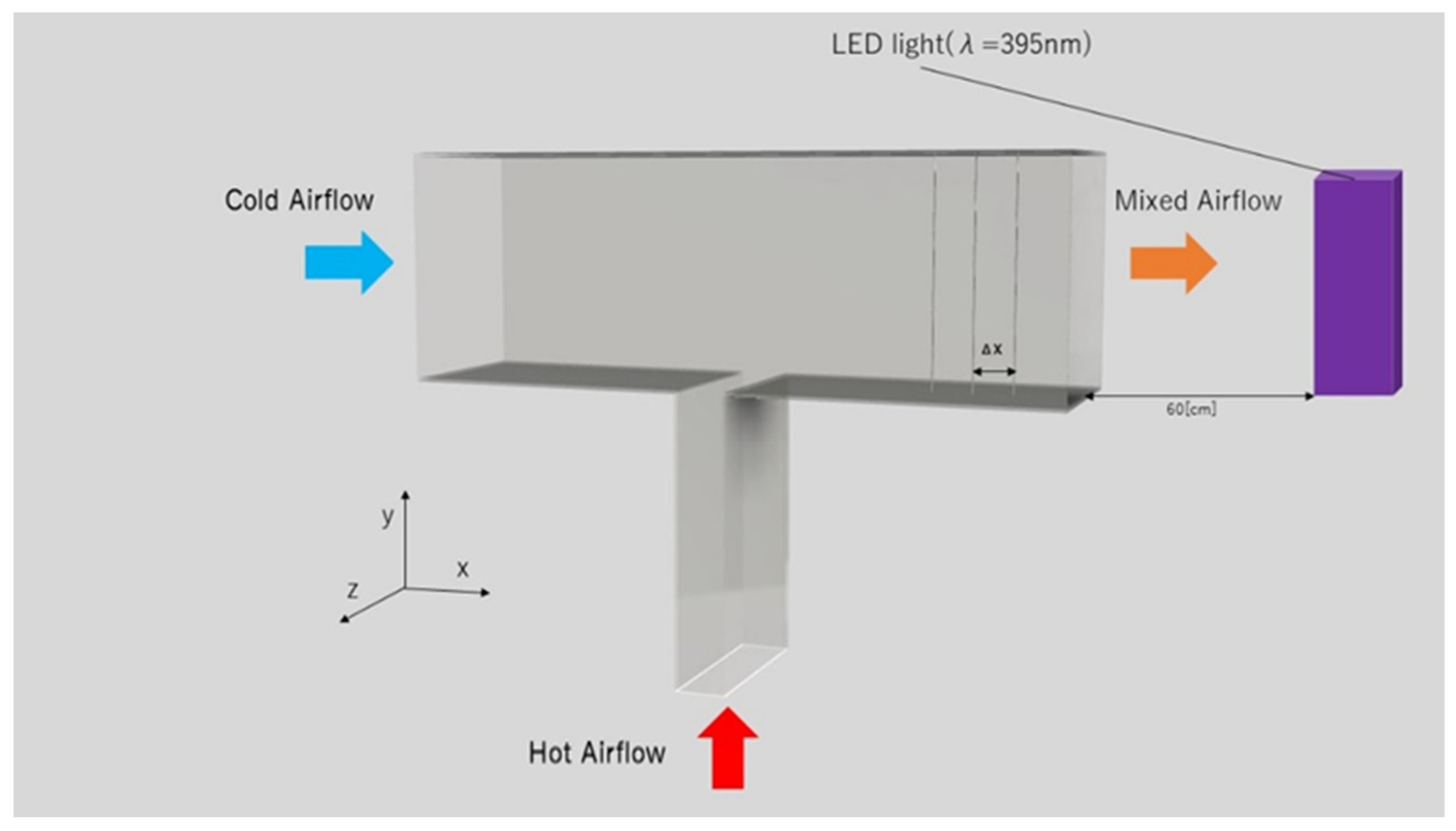
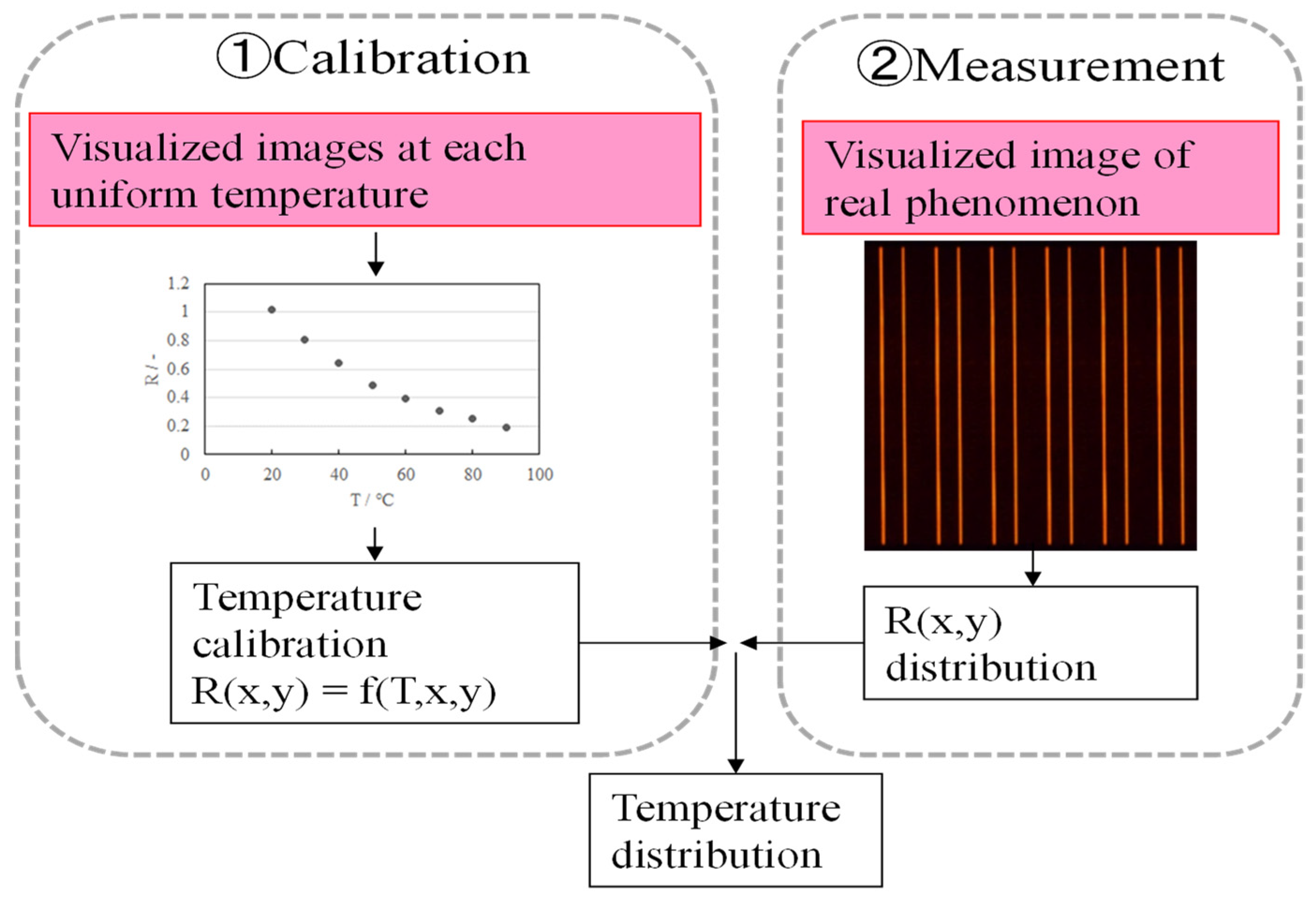

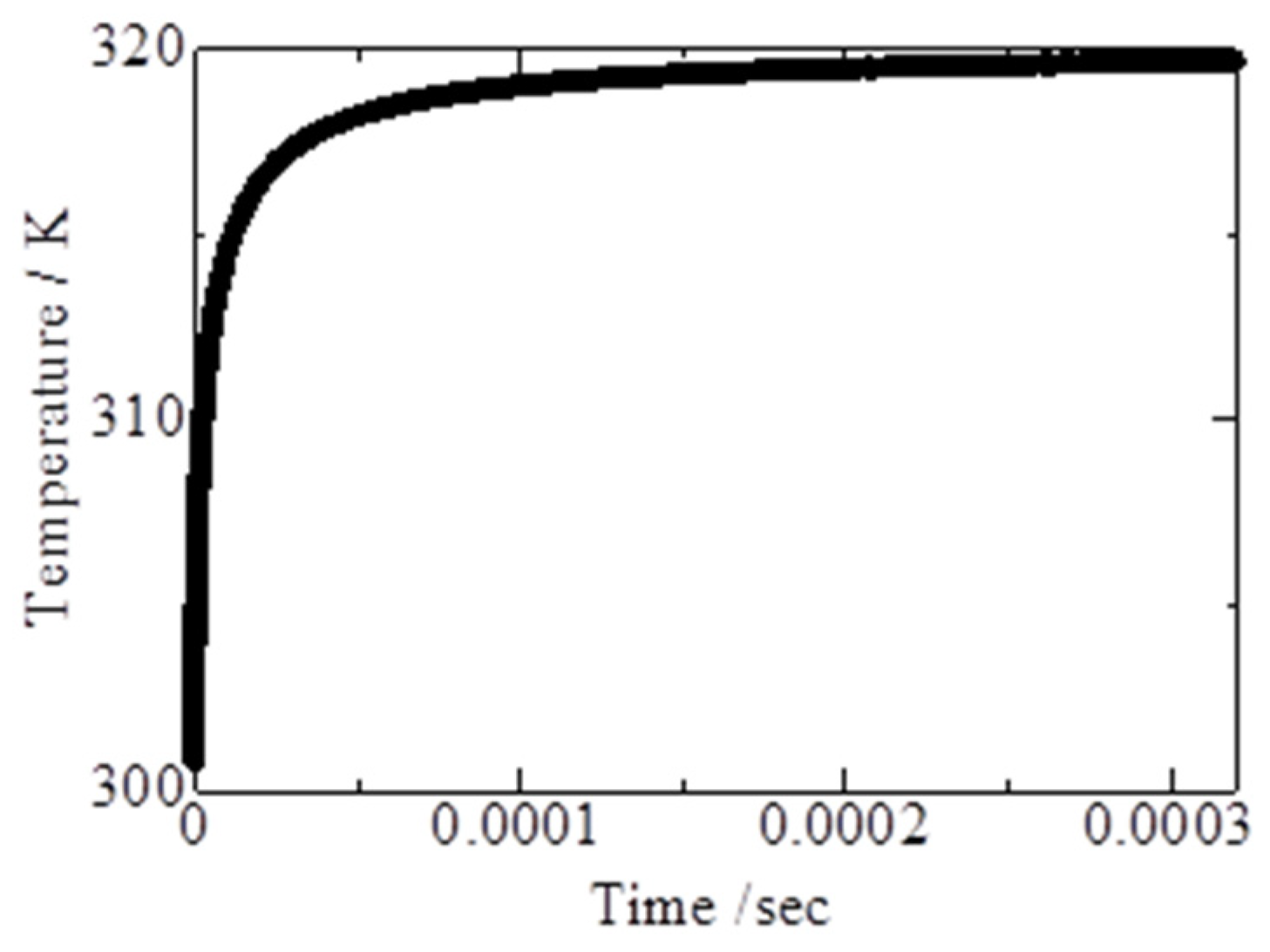
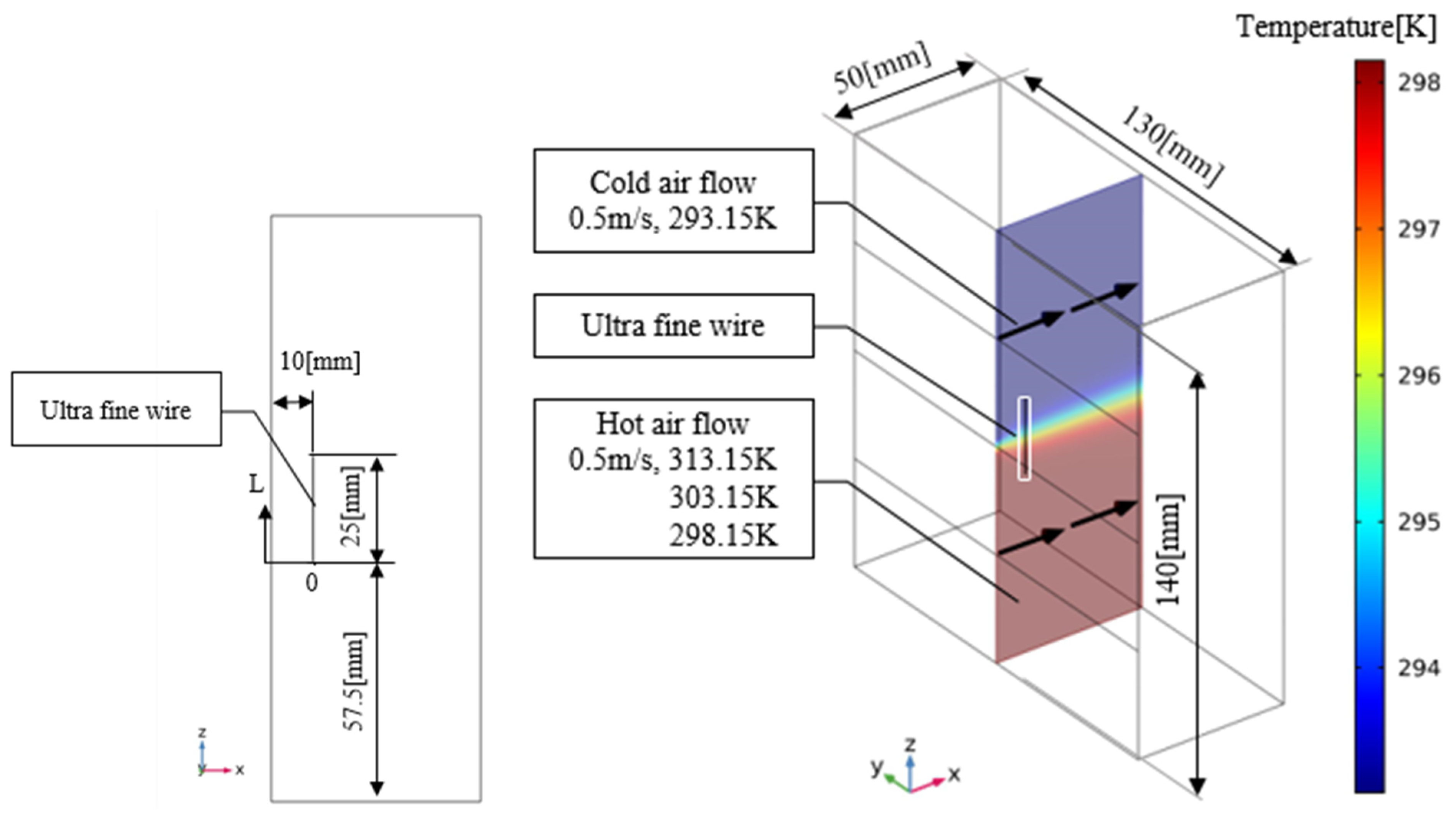
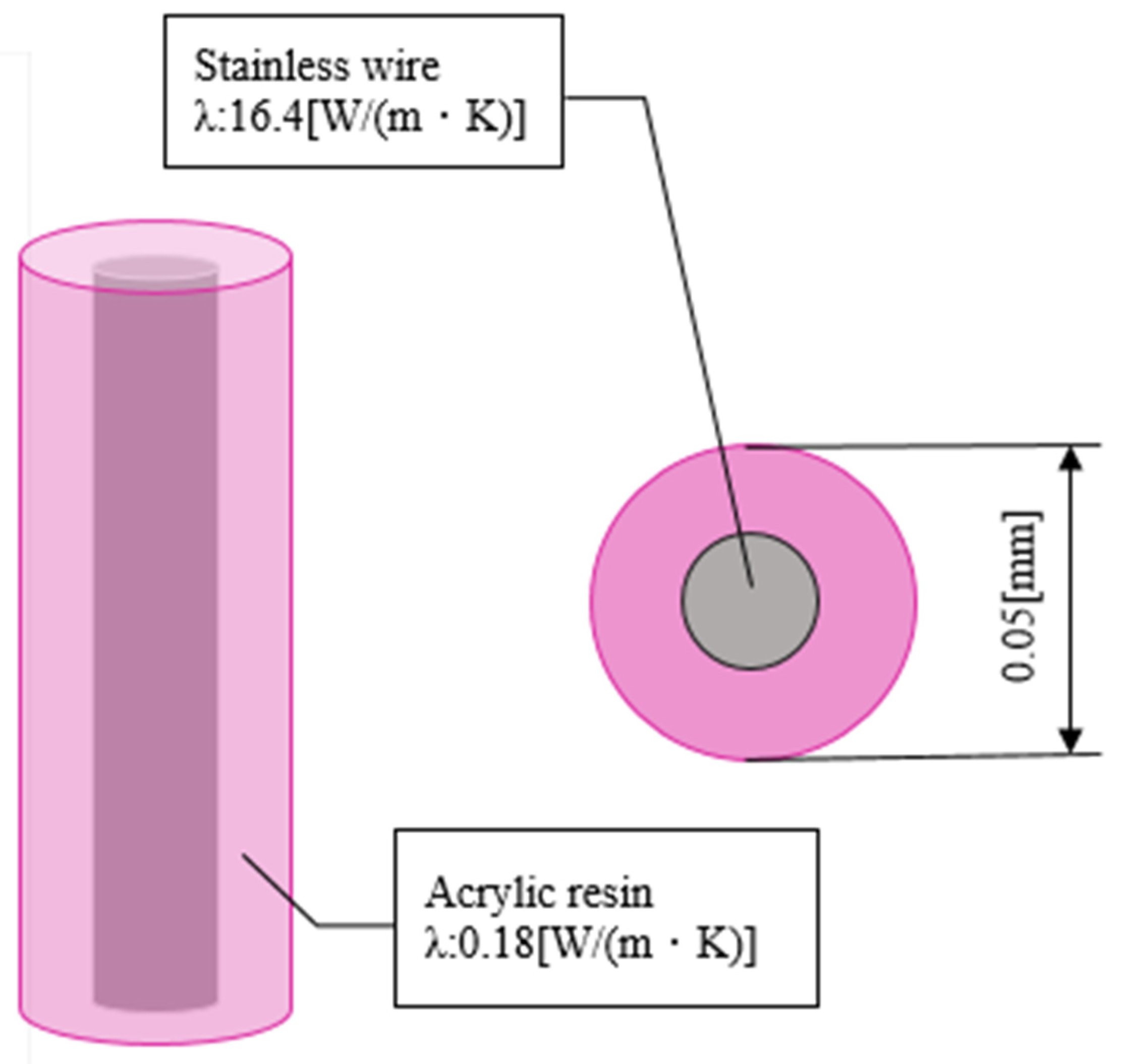
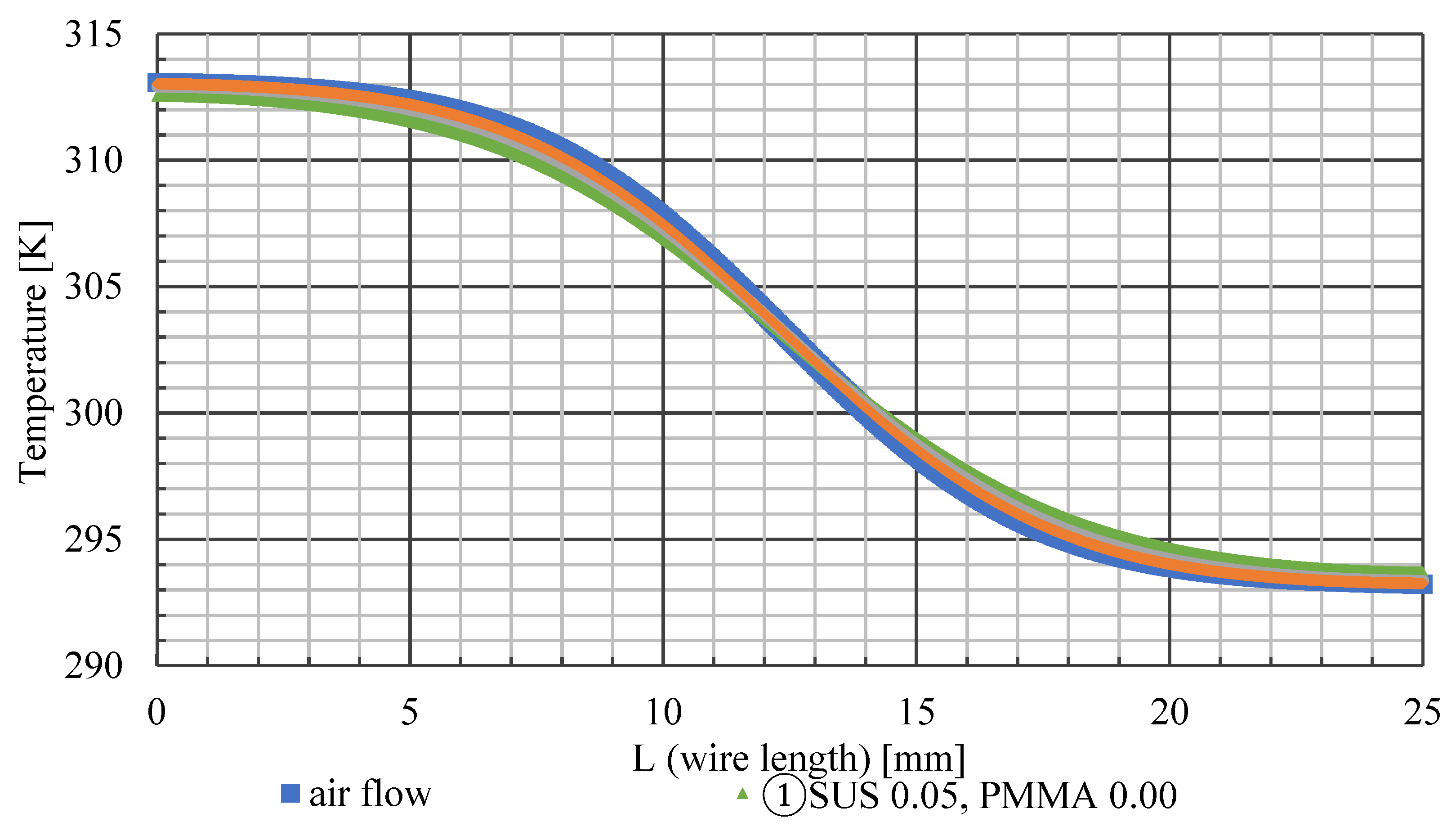

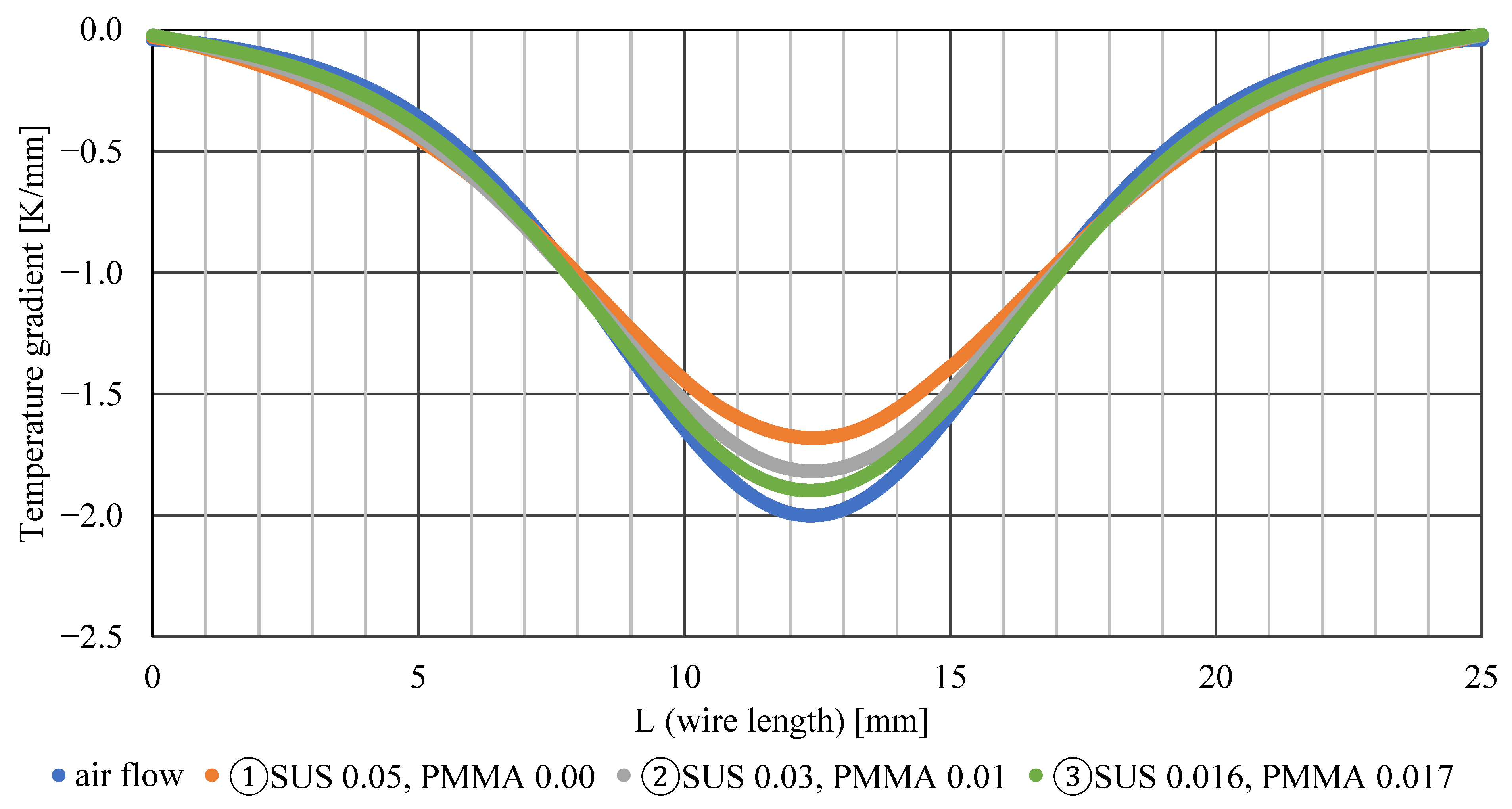
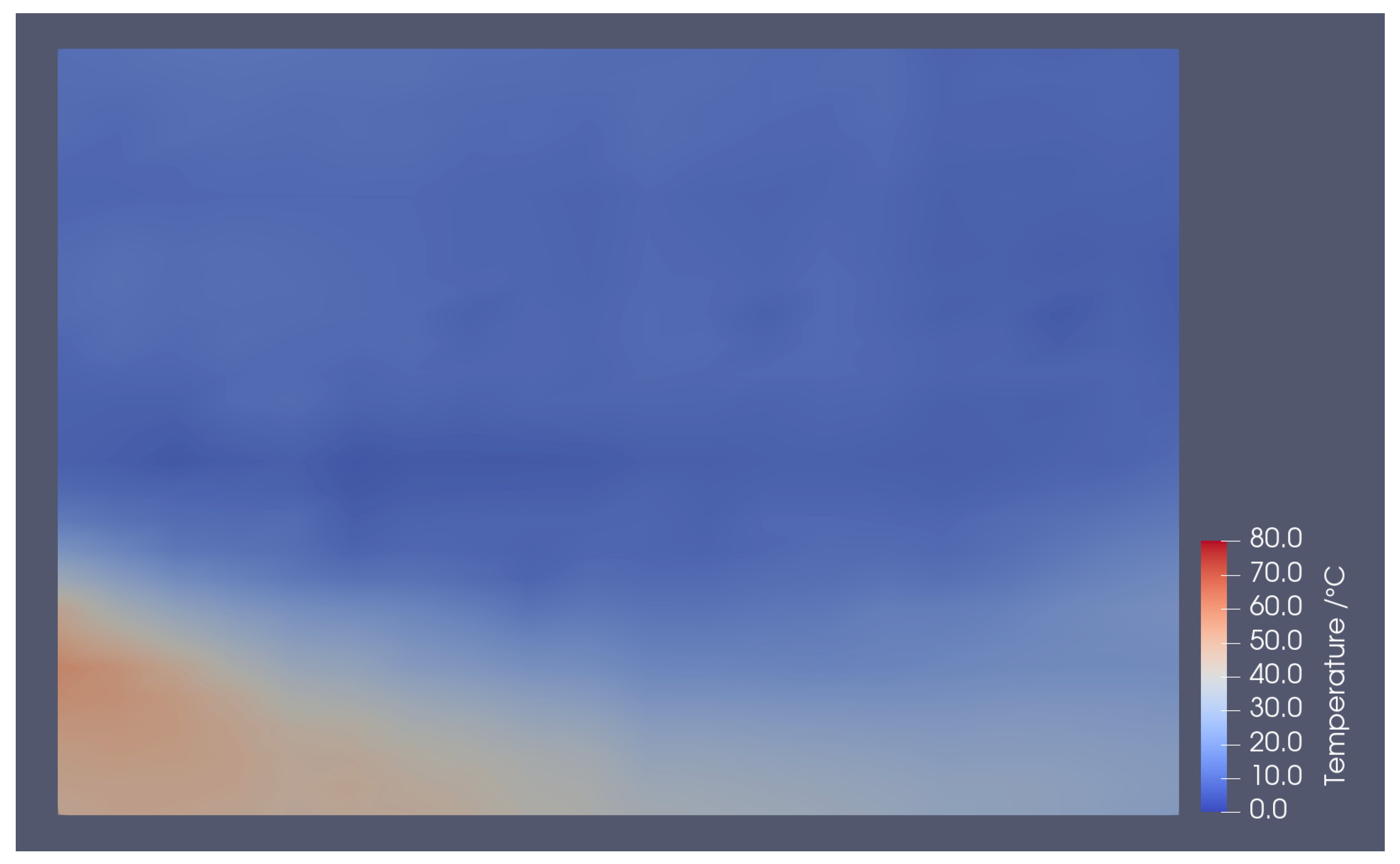
Publisher’s Note: MDPI stays neutral with regard to jurisdictional claims in published maps and institutional affiliations. |
© 2022 by the authors. Licensee MDPI, Basel, Switzerland. This article is an open access article distributed under the terms and conditions of the Creative Commons Attribution (CC BY) license (https://creativecommons.org/licenses/by/4.0/).
Share and Cite
Funatani, S.; Tsukamoto, Y.; Toriyama, K. Temperature Measurement of Hot Airflow Using Ultra-Fine Thermo-Sensitive Fluorescent Wires. Sensors 2022, 22, 3175. https://doi.org/10.3390/s22093175
Funatani S, Tsukamoto Y, Toriyama K. Temperature Measurement of Hot Airflow Using Ultra-Fine Thermo-Sensitive Fluorescent Wires. Sensors. 2022; 22(9):3175. https://doi.org/10.3390/s22093175
Chicago/Turabian StyleFunatani, Shumpei, Yusaku Tsukamoto, and Koji Toriyama. 2022. "Temperature Measurement of Hot Airflow Using Ultra-Fine Thermo-Sensitive Fluorescent Wires" Sensors 22, no. 9: 3175. https://doi.org/10.3390/s22093175
APA StyleFunatani, S., Tsukamoto, Y., & Toriyama, K. (2022). Temperature Measurement of Hot Airflow Using Ultra-Fine Thermo-Sensitive Fluorescent Wires. Sensors, 22(9), 3175. https://doi.org/10.3390/s22093175







